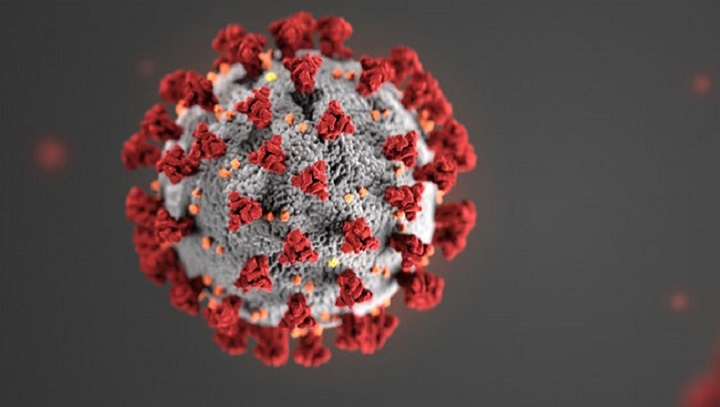Stanford researchers are in the preclinical stages of developing a nanoparticle vaccine for COVID-19. The vaccine, if successful, could be stored at less extreme temperatures than mRNA vaccines currently in use, creating opportunities for distribution in lower-resourced settings.
The research was pioneered by Abigail Powell, a former postdoctoral researcher studying vaccine development in the lab of Peter Kim Ph.D. ’85. When Santa Clara County first enacted its shelter-in-place order in early March, Powell had been working on a nanoparticle vaccine for Ebola but quickly shifted gears to focus on SARS-CoV-2.
Fourth year chemistry Ph.D. student Payton Weidenbacher, a fellow researcher in the Kim lab, explained that unlike Pfizer and Moderna’s mRNA vaccines, nanoparticle vaccines do not cause the body’s cells to produce copies of the COVID-19 spike protein. Instead, several copies of the spike protein are added onto a nanoparticle. This arrangement creates a greater immune response compared to injecting the spike protein alone, as the nanoparticle makes the proteins more visible to the immune system.
In an interview with The Daily, Weidenbacher said that their vaccine uses “a self-assembling multimeric nanoparticle called ferritin,” which was selected because it has the same three-fold axis of symmetry as the COVID-19 spike protein.
Researchers in the Kim lab believe that the nanoparticle vaccine’s greatest strength is its relative ease of transport and storage.
“I think this vaccine demonstrates promise as it could be delivered in one shot and would not require cold-chain storage,” Adonis Rubio ’21, an undergraduate researcher in the Kim lab, said. “If successful, this vaccine would be a good candidate for low- and middle-income countries, which so far are waiting to get access to some of the currently approved vaccines.”
The Pfizer vaccine, in contrast, must be stored at -70˚C, which requires a professional lab-grade freezer. These freezers are often inaccessible to low-income regions of the U.S. and around the world, potentially preventing billions from receiving a dose.
“Protein subunit vaccines can often be stored in refrigerators and maintain their stability, whereas the mRNA vaccine candidates have to be frozen for long-term storage,” Powell wrote. “We also hope to further increase stability by freeze-drying our vaccine, which could allow it to be stored at room temperature, making distribution much more straightforward.” She added, however, that there is still much work to be done, so the optimal storage conditions currently remain uncertain.
The vaccine is at the preclinical stage, and studies have been conducted on mice both in vitro (on cells) and in vivo (in living organisms) to assess its efficacy. “Our vaccine is very immunogenic,” Weidenbacher said. “We’ve been using an adjuvant with it, which helps to promote the immune response. Our nanoparticle vaccine provides more immunity than is found in convalescent patients who have overcome the coronavirus.”
In terms of next steps, Weidenbacher said that the lab is continuing to work on developing the best formula for the nanoparticle and adjuvant. “We’re collaborating with several other labs to determine the best nanoparticle for promoting stability, long-term storage and immunogenicity, and it’s a fine balancing act,” he said.
Powell added that there are several other studies that need to be completed before testing in humans can begin. “We do think the results are exciting though and therefore warrant continuing to work on this,” she said. “This is especially true given the critical global need for COVID-19 vaccinations.”
Yvonne Maldonado, professor of pediatrics, infectious diseases and health policy at the Stanford Medical School, serves on the COVID-19 Western States vaccine review panel. She believes that the nanoparticle vaccine is an exciting opportunity for further research.
“This novel approach and platform for administering spike protein antigens appears to be a promising opportunity to build additional rapid and efficient vaccination strategies against SARS-CoV-2,” Moldonado wrote.
Contact Sophia Nesamoney at nsophia ‘at’ stanford.edu.
